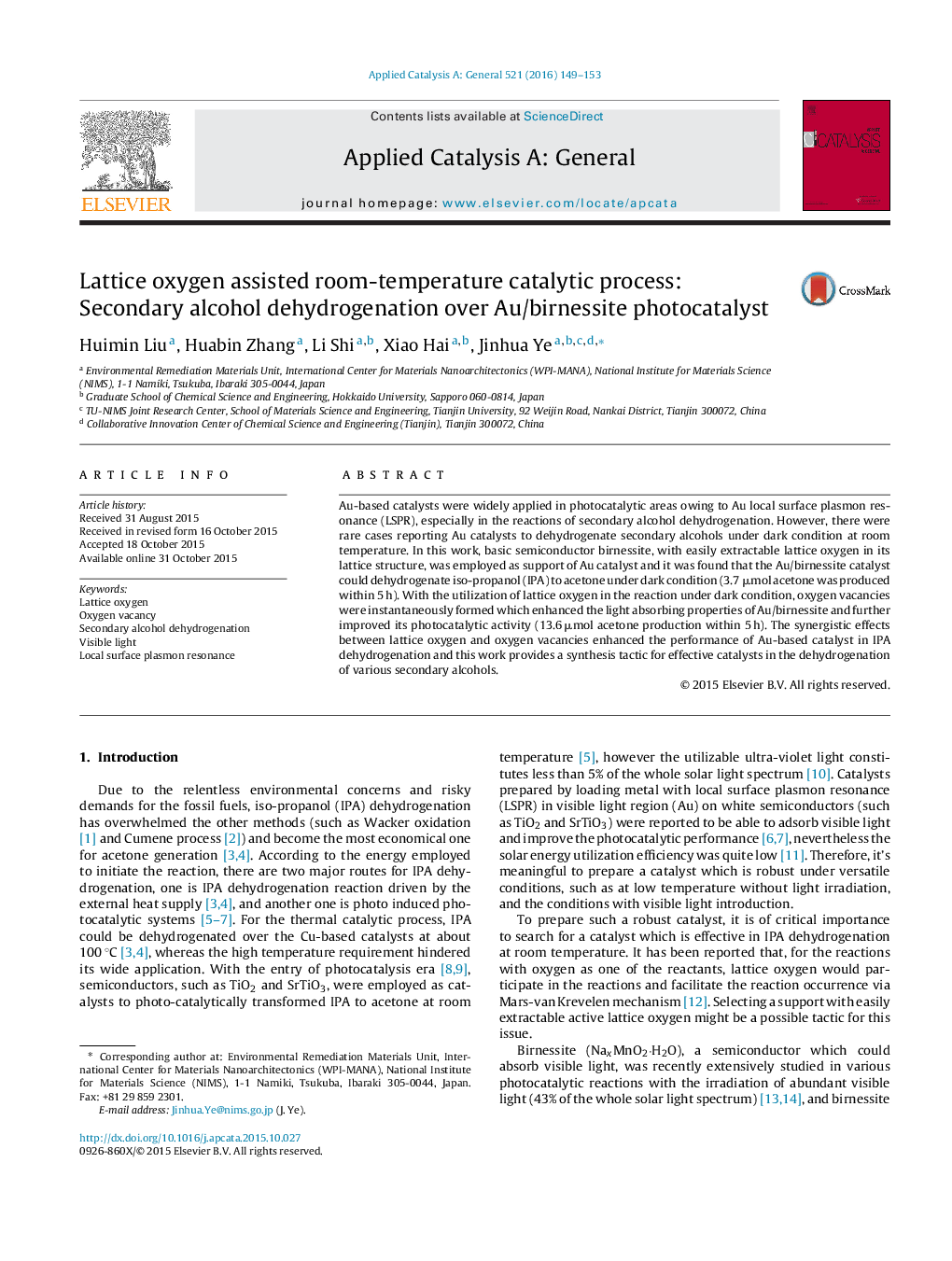| کد مقاله | کد نشریه | سال انتشار | مقاله انگلیسی | نسخه تمام متن |
|---|---|---|---|---|
| 38804 | 45791 | 2016 | 5 صفحه PDF | دانلود رایگان |
• Au/birnessite was effective in secondary alcohol dehydrogenation at room temperature under dark condition.
• Lattice oxygen played an important role in the reaction occurrence under dark condition.
• The catalytic activity of Au/birnessite was further improved with visible light irradiation owing to the instantaneously generated oxygen vacancies and Au LSPR.
Au-based catalysts were widely applied in photocatalytic areas owing to Au local surface plasmon resonance (LSPR), especially in the reactions of secondary alcohol dehydrogenation. However, there were rare cases reporting Au catalysts to dehydrogenate secondary alcohols under dark condition at room temperature. In this work, basic semiconductor birnessite, with easily extractable lattice oxygen in its lattice structure, was employed as support of Au catalyst and it was found that the Au/birnessite catalyst could dehydrogenate iso-propanol (IPA) to acetone under dark condition (3.7 μmol acetone was produced within 5 h). With the utilization of lattice oxygen in the reaction under dark condition, oxygen vacancies were instantaneously formed which enhanced the light absorbing properties of Au/birnessite and further improved its photocatalytic activity (13.6 μmol acetone production within 5 h). The synergistic effects between lattice oxygen and oxygen vacancies enhanced the performance of Au-based catalyst in IPA dehydrogenation and this work provides a synthesis tactic for effective catalysts in the dehydrogenation of various secondary alcohols.
Figure optionsDownload high-quality image (133 K)Download as PowerPoint slide
Journal: Applied Catalysis A: General - Volume 521, 5 July 2016, Pages 149–153
